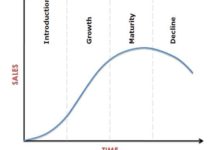Criteria for Successful Positioning
Following are the characteristics that are used to determine the criteria for successful positioning.
Clarity
The positioning idea must be clear in terms of both target market and differential advantage. The target market should be clearly demarcated and identifiable in terms of demographic or geographic parameters, or a combination of both. Each target market of the company should be different from the other. The target market should be clearly defined in terms of being served by a distinct value proposition. The value proposition should be clearly communicated.
Most companies do not clearly communicate the corresponding value proposition because they also want their offerings to be acceptable to customers other than those in their target market. They feel that defining value propositions will narrowly restrict their market.
Sometimes companies may not have researched their target markets well enough to know their requirements. So the value proposition that they communicate and deliver is not suitable for the intended market.
The value proposition is communicated mostly through advertising. Advertising agencies are responsible for communicating the value proposition. Though the company briefs the agency, a third party can never completely understand the subtle elements embedded in the value proposition. Therefore, advertising may do a poor job of communicating the value proposition.
Advertising, in an effort to be more creative tries to create images, stories, jingles and these cannot truly convey or represent the value proposition. In fact, the more ‘creative’ the advertising, the more likely it is to deviate from its intended goals of effective communication of conveying the value proposition to the intended target market.
Consistency
Confusion will arise if changes in positioning planks occur frequently. For instance, if a company positions on quality of service in one year, and then next year if changes its positioning to superior product performance, the consumer would not know what to expect from the offering of the company. Customers who were attracted to the previous positioning of the company now desert it. New customers do not find the new positioning of the company credible, as their image of the company being something other than what it is claiming to become, persists.
A company which changes its positioning planks frequently will leave customers confused about its real identity. Customers will not know what the company stands for. A company has to stick to a positioning plank for a reasonable length of time so that the new image sinks into customers. A company feels that all that a new positioning requires is an ad campaign posturing the new status.
But positioning is just an external manifestation of what the company really is. So if a company changes its positioning plank it has to transform itself to become true to its new positioning. No company can transform itself completely so frequently. And if the company has not been able to align itself with its new positioning, customers will not get what they have been promised in the new positioning plank.
But consistency does not mean permanence. A company may change its initial positioning either because customers demand different value proposition, so it has to be different now, or because the company may have acquired new resources enabling it to be something else.
Credibility
The differential advantage must be credible to customers. Credibility means believability and trustworthiness. Positioning is a promise made to the customer. The customer must believe that the company will deliver what is promises, and is capable of delivering the promise. Through advertisement and its public relation efforts the company should be able to demonstrate its capability to deliver the promised utility.
Every time a customer buys the company’ s product he should have got what the company promised in its positioning strategy. Through word of mouth the company develops a reputation for delivering its promised value. Credibility built through personal use of the product and word of mouth are stronger than credibility built through advertising and public relations.
Competitiveness
The differential advantage should offer something of value to the customer which the competition is failing to supply. The company should be able to develop or acquire a distinct set of resources and processes. This unique set of resources and processes are used to deliver a distinctive value which no other company can possibly deliver, since they lack the set of resources and processes used to create it. Therefore the key to be able to provide differential value to customers is to possess a distinctive set of resources and processes which competition does not possess.
Sine Qua Non of Positioning
Positioning is not an abstract art. It is important for firms to understand and implement a few fundamental do’s and don’ts to attain successful positioning.
- The positioning of a corporate or a brand should be clear and precise. The unique proposition made to the customer should be brief and catchy. Instead of overloading customers with a maze of complicated information, companies should be precise and concise.
- A company cannot hope to reach out to the entire market with one positioning appeal. The target audience should be determined, and the positioning appeal and message should be tailored to it.
- The product or service should be set apart from what competitors are offering. If the product or service being offered by the company is not better than or different from that of competition, why should customers buy it? It is extremely important to state that one compelling reason why the company’s product is the best for the target customers.
- The positioning statement should clearly reflect what the organization stands for, and what it is about. Its values, intent and offering should be clear from the positioning statement.
- Positioning should address the felt needs of the customer. Customers should be told as to how the company’s product will fulfill these needs. Such benefits should be stressed in the positioning statement. These needs should be specific, measurable and something that customers really want. Instead of being vague that the company offers a lot of variety or selection, a company should soy that it has 25 different models, and five colors in each model.
- Positioning appeals should be specific. One unique value proposition that customers desire the most must be present in the product.
- The company should also be able to deliver what it promises to the customer as its success depends on its credibility.


